Festival memories in SZ: from empty city to bustling metropolis
Writer: Windy Shao | Editor: Zhang Zeling | From: Original | Updated: 2024-02-23
In my memory, Shenzhen was almost an empty city during the Spring Festival over 20 years ago. Most of its residents were then migrants who returned to their hometowns nationwide to celebrate the most important festival for Chinese people.
My earliest memory of Chinese New Year here dated back to 1999. I remember that my husband and I walked for over an hour in Futian District, only to find one or two food stalls that opened for business to have our New Year's Eve dinner. There were hardly any vehicles on the road, and only a few pedestrians could be seen in the alleys. The occasional sound of firecrackers reminded us that it was indeed the Spring Festival.
This situation gradually changed at the beginning of the new century. In 2001, China joined the World Trade Organization, leading to the rapid growth of foreign trade factories in Shenzhen. A large number of migrant workers flooded into the city, and many of them chose to stay in Shenzhen for the Spring Festival. Over time, more and more migrants bought apartments and made the city their home.
In recent years, a new trend known as the "reverse reunion" has emerged. Previously, people working in Shenzhen would return to their hometowns for the festival. But now, Shenzhen residents bring their family members from their hometowns to the city for reunions, as the city offers a more favorable climate during the holiday compared to most other cities in China.
Large shopping malls and restaurants organize various activities to meet people's needs for food, entertainment, and shopping during the festival. Local government departments also launch events to attract people to stay in Shenzhen for the holiday.
Apart from commercial activities, which have shaped the city's customs and urban culture for Spring Festival, people from all over China, and even from around the world, have brought their hometown traditions to the city.
According to Tencent data, Shenzhen ranks fourth among domestic cities in terms of population influx during the Spring Festival this year. Additionally, Shenzhen North Railway Station and Shenzhen Bao'an International Airport rank second in terms of popularity among domestic train stations and airports during this period.
From an empty city to a bustling metropolis, the memories of the Spring Festival make Shenzhen unique, and its people who they are.
The accompanying pictures depict the lively scenes during this year's Spring Festival in Shenzhen.
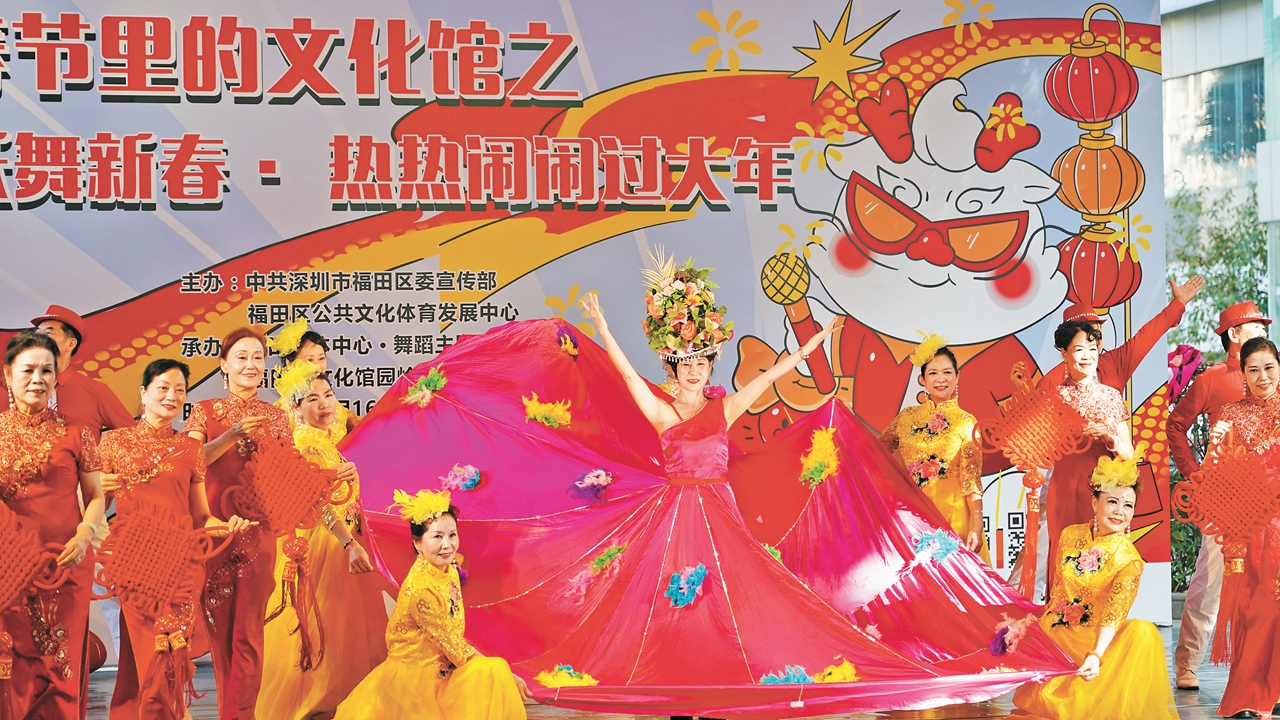
Performers pose for a photo at a community festival event in Futian District on Feb. 16. Photos by Lin Songtao otherwise stated
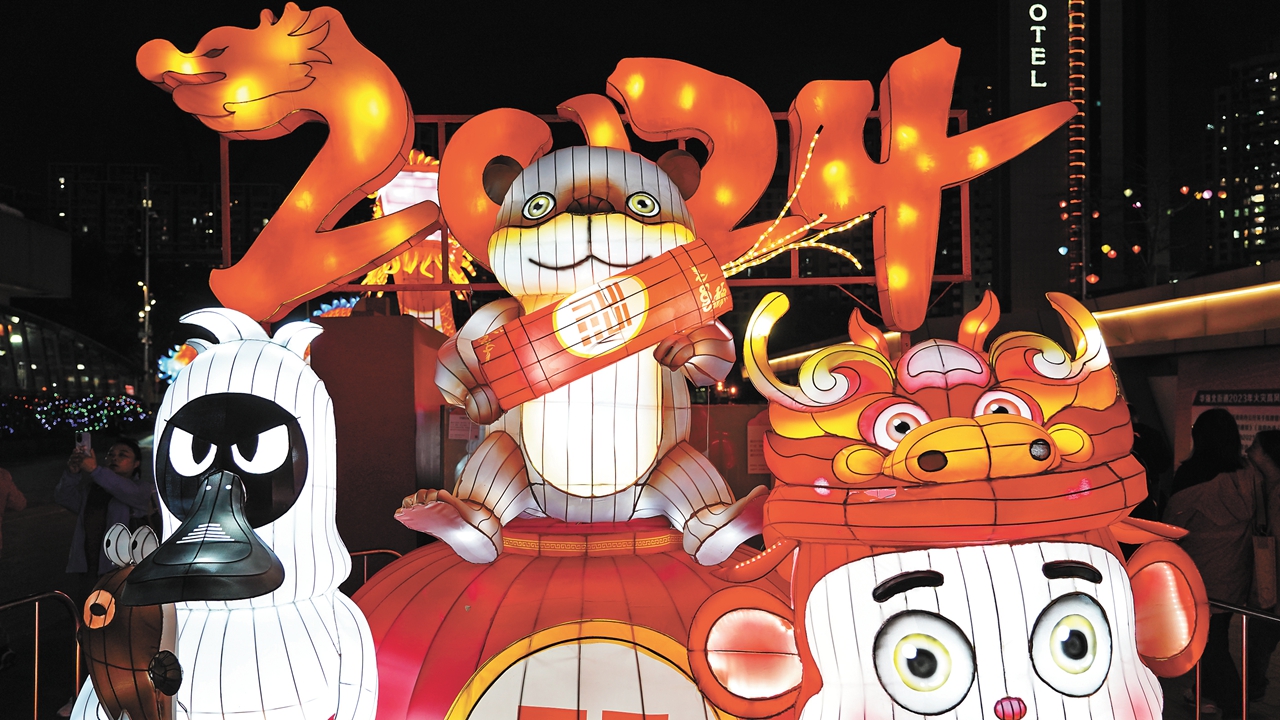
Light installations at Huaqiangbei in Futian District.
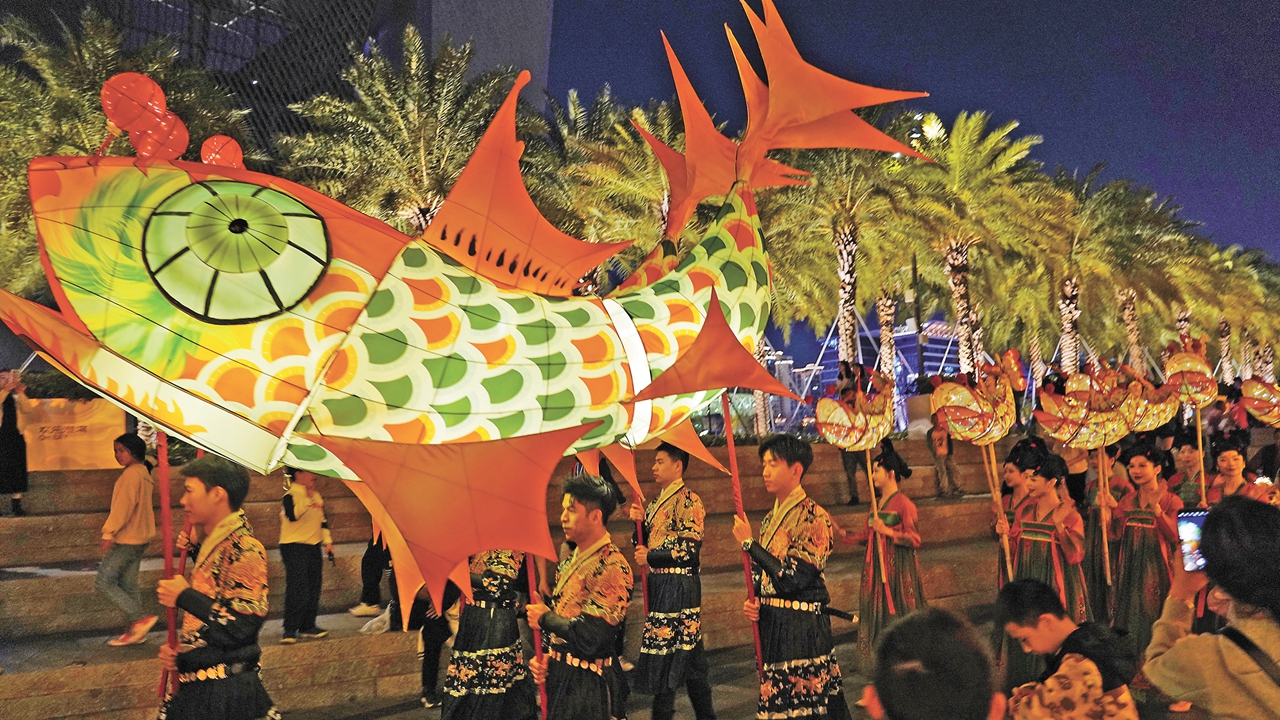
A fish lantern parade at OCT OH Bay on Feb. 15.

A Yingge dance parade on Shenzhen Festival Avenue in Futian District on Feb. 14. A total of 19 parade formations participated in the event.
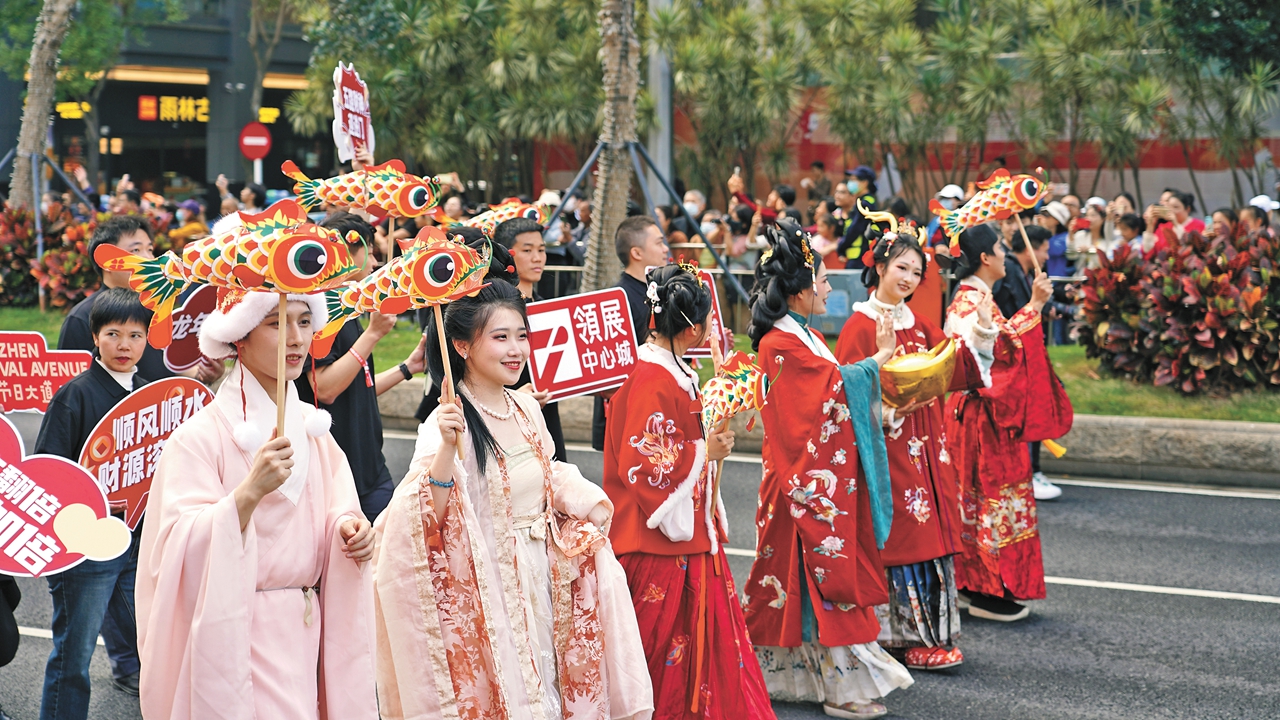
A Hanfu parade in Futian District on Feb. 14.
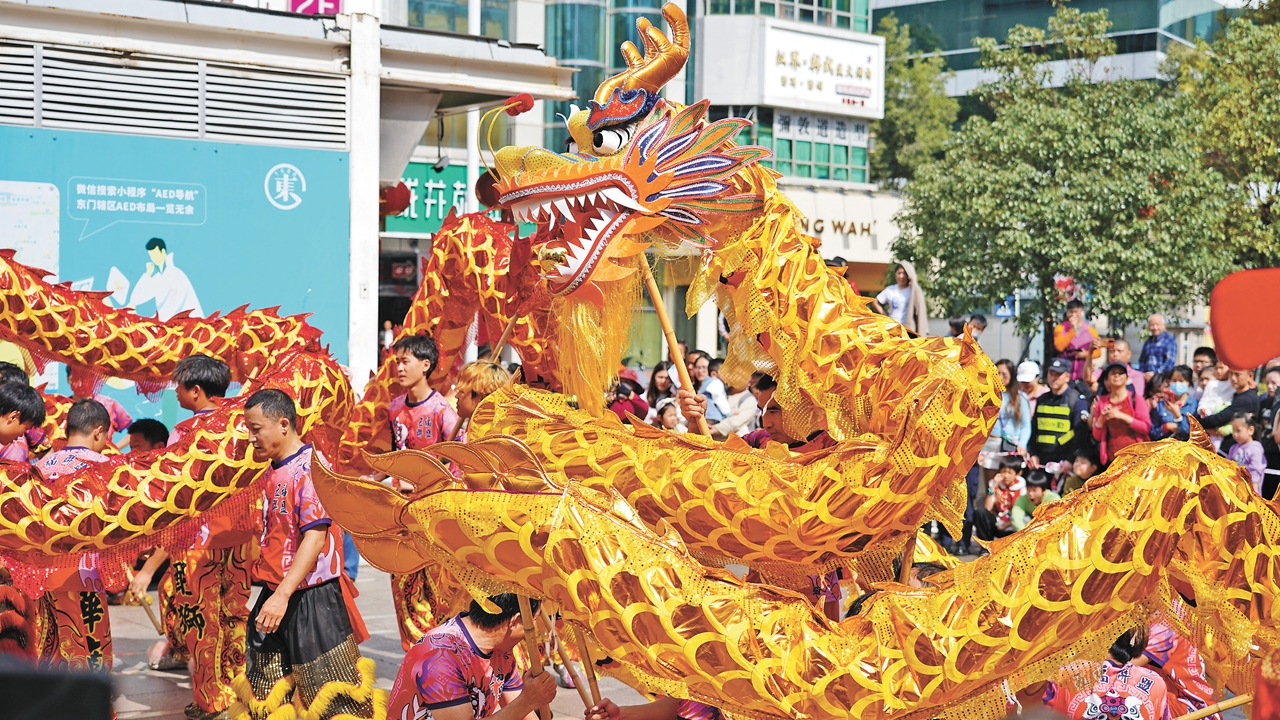
Dragon dance in Dongmen, Luohu District, on Feb. 14.
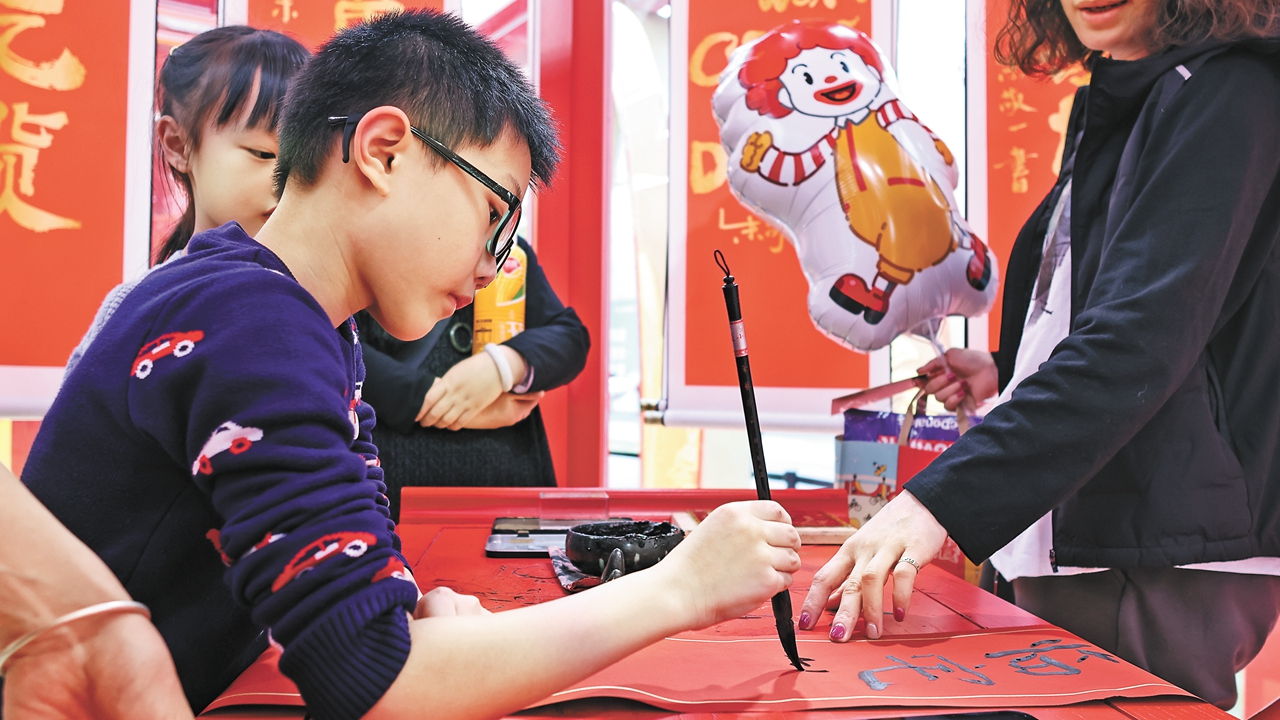
McDonald's launched a pop-up event during the festival in Shenzhen. The site was created in traditional Chinese style, combining food tasting, folk culture, and innovative interactions. Liu Xudong
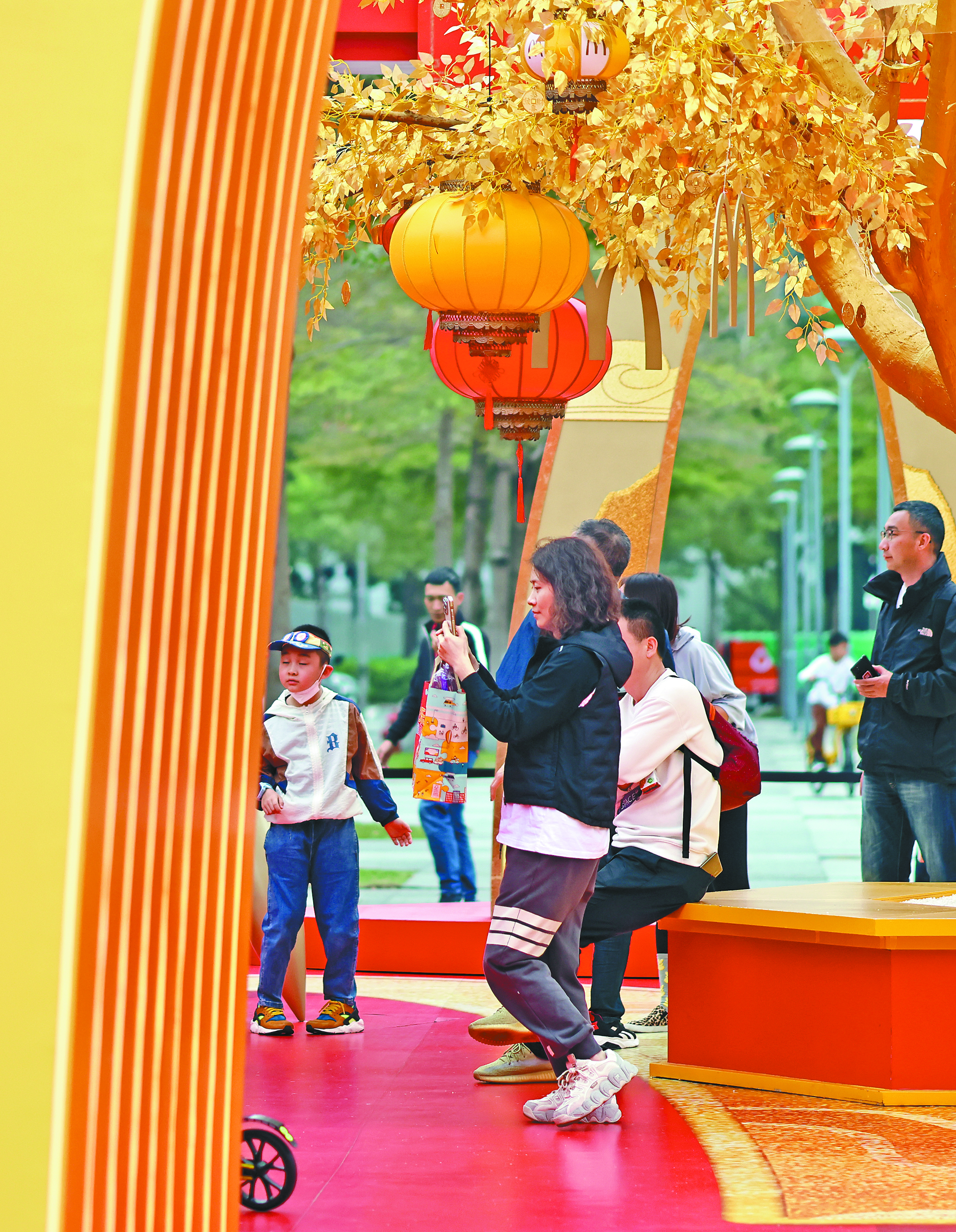
McDonald's launched a pop-up event during the festival in Shenzhen. Liu Xudong